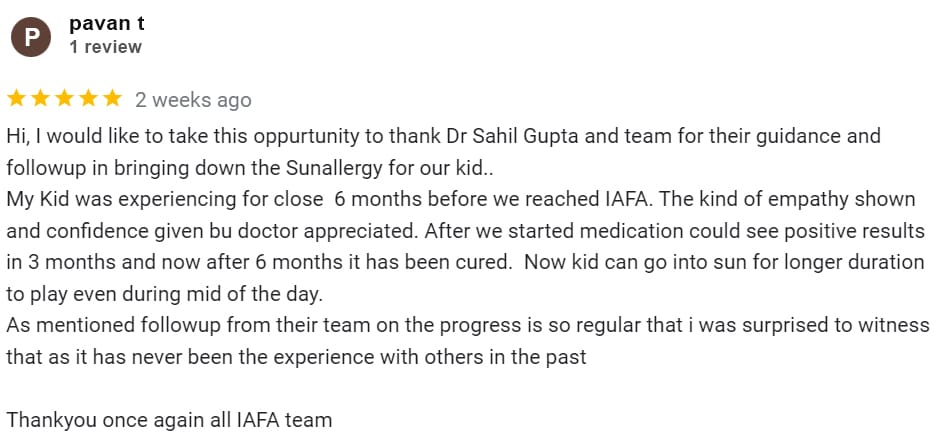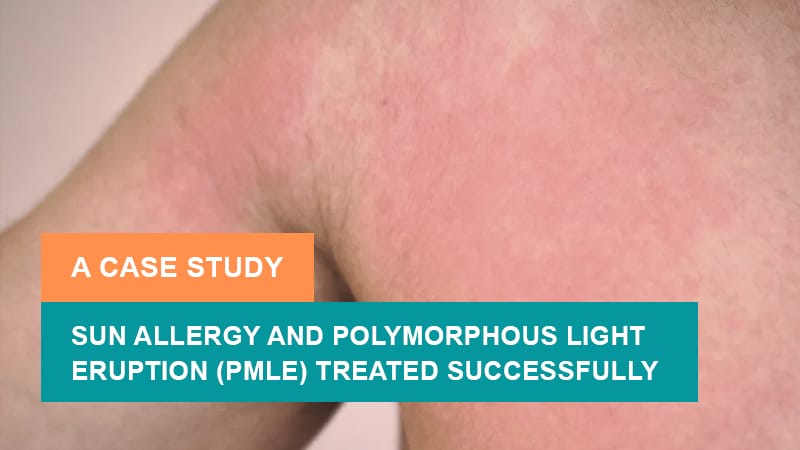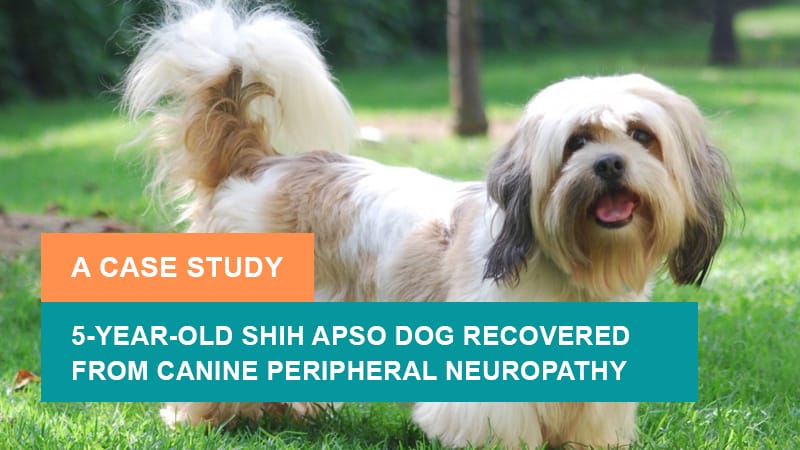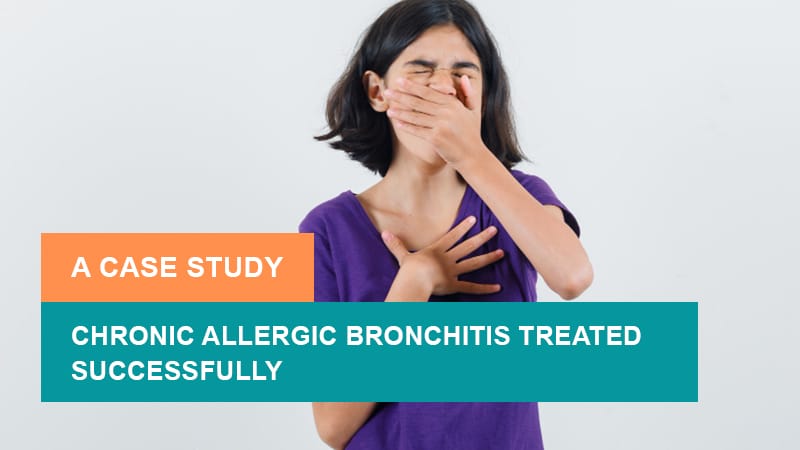Abstract
Background: Sun-induced hypersensitivity, i.e., solar urticaria or photosensitive dermatitis, presents with erythema, burning, and pruritus on exposed sites. Ayurveda classifies such presentations under Tvak-Vikara with predominant Pitta, mainly Bhrajaka Pitta, and associated Rakta involvement.
Objective: To document the clinical course and outcome of a protocolized Ayurvedic regimen given to a pediatric patient from Hyderabad, India.
Methods: A 12-year-old female with sunlight-triggered rash, burning, and pruritus since August 2023 received treatment from IAFA Ayurveda, i.e., topical IAFA 333 oil, internal IAFA Swaras, i.e., Bhoomi Amla and Durva Swarasa, along with Skin Detox tablet, topical Lacto-Calamine during sun exposure, and later addition of Praval Pishti with Gulkand and Kidicare syrup was done. Progress was assessed at scheduled follow-ups, and symptom presence was recorded.
Results: Over the nine months, the patient showed progressive reduction in rash, burning, and pruritus with improved outdoor tolerance. No treatment-related adverse effects were documented.
Conclusion: In this single-patient case study, a structured Ayurvedic regimen by IAFA Ayurveda, emphasizing external and internal treatment and systemic detoxification, was associated with clinical improvement and increased sun-tolerance over nine months.
Introduction
Solar urticaria, commonly termed as sun allergy, is a photosensitivity disorder characterized by the rapid onset of erythema, burning sensation, pruritus, or wheals upon exposure to sunlight, particularly UVA and visible light. Modern dermatology classifies it as an immediate-type photo-immunologic hypersensitivity, where exposure to specific wavelengths triggers mast-cell degranulation, histamine release, and neuro-immune inflammation in the skin of the individual.
As per Ayurveda, sun allergy has a deeper constitutional interpretation of this pathology (Samprapti). Conditions presenting with burning (Daha), redness (Raag), itching (Kandu), and hypersensitivity of the skin align with Tvak Vikara, a broad category of skin dysfunctions governed by the imbalance of Pitta, mainly Bhrajaka Pitta, Rakta dhatu, and the patency of Rasavaha and Raktavaha Srotas.
Bhrajaka Pitta, the subtype of Pitta responsible for skin color, temperature regulation, luster, and response to external stimuli, plays a main role in mediating reactions to heat, light, and environmental factors. Classical Ayurvedic texts describe that when Bhrajaka Pitta becomes aggravated due to excess heat, sunlight (Atapa), spicy foods, stress, or seasonal influences, it overreacts to external stimuli, producing symptoms similar to photosensitive eruptions, i.e., Daaha (burning), Raaga (redness), Kandu (itching), Sphotana (eruption), and Twak Sparsha Asahatvam (sun intolerance).
Along with this, Rakta Dushti is often associated with hypersensitive reactions of the skin. Since Rakta and Pitta maintain an Ashraya- Ashrayee (substrate-resident) relationship, aggravation of Pitta also vitiates Rakta, causing inflammatory, erythematous, and heat-dominant skin disorders. This explains why photosensitive reactions intensify in individuals with inherent or acquired Pitta or Rakta imbalance.
From a pathogenic point of view, the interaction of aggravated Bhrajaka Pitta with vitiated Rakta results in reactivity to sunlight, leading to recurrent rashes and burning, typically of solar urticaria. When Ama (metabolic toxins) or Srotorodha (microchannel obstruction) coexist, due to chronicity, pruritus, and variable response, the hypersensitivity increases further.
Thus, sun allergies as per Ayurveda are Pitta Parkopa, especially Bhrajaka Pitta Dushti, along with Rakta Dushti, which are interpreted as inflammatory and hypersensitive skin responses. Ama and Srotorodha in the body, lowering the threshold for external triggers and exposure to Aatapa (sun), precipitate acute flare-ups.
This condition also resembles aspects of Sheetapitta, Udarda, and Pittaja Tvak Vikara, where heat-mediated triggers provoke rapid-onset skin symptoms. Ayurvedic management principle is correction of Doshic imbalance (Pitta), local protection, along with dietary-lifestyle modification to reduce triggers.
Case Presentation
A 12-year-old female presented on 16 February 2024 with recurrent sun-induced erythematous rash, burning, and pruritus over exposed areas for the past seven months, aggravated rapidly upon sunlight exposure. Her history included a viral illness in late 2023 and menarche in January 2023, suggesting heightened Pitta susceptibility. Examination findings and symptom patterns were consistent with Pitta-dominant Tvak Vikara, particularly Bhrajaka-Pitta aggravation with associated Rakta Dushti.
She was initiated on an Ayurvedic protocol including IAFA 333 oil, Bhoomi Amla Swaras, Durva Swaras, and a Skin Detox tablet. Across follow-ups on 17 April, 18 May, 17 June, 22 October, and 23 November 2024, she showed progressive improvement, with a complete absence of rash during a 1.5-hour outdoor cycling session by May. By November 2024, only minimal intermittent symptoms persisted, and no adverse effects were reported throughout the treatment period.
1) Patient Demography
Age/sex: 12-year-old female
Address: Hyderabad, Telangana
Date of first Consultation: 16/02/2023
2) Primary complaints: Recurrent skin rashes with burning sensation localized to sun-exposed areas, i.e., more on hands, neck than face.
3) Medical History
- Prior homeopathic treatment (partial symptom reduction).
- Viral febrile illness late 2023.
- Menarche in Jan 2023.
- Childhood throat pain (remote).
4) Diagnosis: Solar Urticaria/ Sun Allergy – Pitta Dosha imbalance (Bhrajaka Pitta)
Method
1) Intervention Protocols
The intervention protocol of this case is to treat underlying Pitta and Rakta aggravation, restore Bhrajaka Pitta balance, and improve cutaneous phototolerance. Management combined external protective therapy, internal Pitta-pacifying and Rakta-Shodhana therapy, and dietary and lifestyle regulation. All interventions were derived from the patient record between 16th February 2024 and 23rd November 2024, with dosage adjustments made during follow-up based on symptom response.
2) Ayurvedic Diagnostic Framework
The diagnostic approach criteria are going through Tvak Vikara, Pittaja Kshaya, Prakopa Lakshanas, and Rakta Dushti Lakshanas. Clinical symptoms like burning (Daha), erythema (Raga), itching (Kandu), hypersensitivity to heat (Atapa- Asahishnuta), episodic eruptions (Sphota), and fluctuating intensity were attributed to Bhrajaka Pitta vitiation along with Rakta Dushti. A secondary role of Ama (toxins) and Srotorodha (obstruction of channels) was considered due to chronicity and variable response intensity.
Table 1. Ayurvedic Diagnostic Assessment
| Samprapti Ghataka | Observation | Interpretation |
| Dosha | Burning, redness, and quick aggravation on sun exposure | Pitta Prakopa, chiefly Bhrajaka Pitta |
| Dushya | Erythematous lesions, inflammation | Rakta Dushti |
| Strotas | Recurrence on exposure, fluctuating severity | Rasavaha and Raktavaha Srotas Dusti |
| Ama | Sensitivity changes, post-illness worsening | Ama presence and micro-channel obstruction (Strotorodha) |
| Udbhava Sthana | Excess heat intolerance | Pitta Sthana (Amashaya or Raktavaha Srotas) |
| Vyakta Sthana | Skin of exposed areas | Twak (Bhrajaka Pitta) |
| Roga Marga | External, with systemic triggers | Bahya or Bahyantara Rogamarga |
| Samprapti | Sunlight exposure results in aggravated Bhrajaka Pitta, which leads to Rakta vitiation and Stsrota blockage and hence results in Rash or burning sensation, etc., symptoms. | Pittaja-Raktaja Tvak Vikara Samprapti |
3) Ayurvedic Treatment Protocol
Management of the condition is combining external and internal therapies aimed at pacifying Pitta, cleansing Rakta, and stabilizing Bhrajaka Pitta function. Externally, IAFA 333 Oil was applied twice daily to soothe inflammation and provide barrier support, while Lacto Calamine with Aloe Vera served as a protective layer during sun exposure, reducing direct photic irritation. Internally, Bhoomi Amla Swaras and Durva Swaras were administered consistently as Pitta-pacifying, hepatoprotective, and Rakta-Shodhana agents.
The Skin Detox Tablet was used as a formulation targeting the Strotas patency. During later visits, Praval Pishti mixed with Gulkand was introduced to exhibits Sheeta Virya Prabhava, reducing burning sensation and stabilizing photosensitivity. Kidicare Plus syrup was added for general nutritive and immune support. Pathya included light, cooling, digestible foods; Apathya focused on dairy, sour, spicy, fermented, and heavy foods that could aggravate Pitta-Rakta physiology. Treatment was adjusted at each follow-up based on symptom intensity and seasonal influences.
Diet and lifestyle advice (Pathya and Apathya)
Pathya: Protective clothing, light and easily digestible diet, lukewarm water in small, frequent amounts, fiber-rich fruits and vegetables, specific cereals (old rice, buckwheat, ragi, millets), herbs (fennel, cumin, curry leaves), selected fruits (pomegranate, mango, lime, kiwi, bael, apple), etc.
Apathya: Milk/ dairy and high lactose foods, high-fat foods, spicy foods, sour foods, packaged foods with additives, yeast-fermented foods or beverages, seafood, some vegetables like lady finger, capsicum, eggplant, spinach, beans, etc.
4) Ayurvedic Treatment Protocol by Follow-Up
Table 2. Formulation-wise Treatment Details by Follow-Up
| Date | Formulation | Dose | Frequency | Route | Timing |
| 16 Feb 2024 | IAFA 333 Oil | 3-5 ml | BID | Topical | Morning and evening |
| Bhoomi Amla Swaras | 7.5 ml | BID | Oral | Before meals | |
| Durva Swaras | 7.5 ml | BID | Oral | Before meals | |
| IAFA Skin Detox Tablet | 1 tab | BID | Oral | After meals | |
| 17 Apr 2024 | IAFA 333 Oil | 3-5 ml | BID | Topical | Morning and evening |
| Bhoomi Amla Swaras | 15 ml | BID | Oral | Before meals | |
| Durva Swaras | 20 ml | BID | Oral | Before meals | |
| Skin Detox Tablet | 1 tab | BID | Oral | After meals | |
| 18 May 2024 | Same regimen | As above | As above | As above | As above |
| 17 Jun 2024 | Same regimen | As above | As above | As above | As above |
| 22 Oct 2024 | Lacto Calamine Lotion | As per need | Every 2 hrs in the sun | Topical | Sun exposure |
| Bhoomi Amla Swaras | 10 ml | BID | Oral | Before meals | |
| Durva Swaras | 10 ml | BID | Oral | Before meals | |
| 23 Nov 2024 | Praval Pishti (P.P) with Gulkand (G) (5-gram P.P in 100 grams of (G) | 1 spoon of the mixture made | BID | Oral | After meals |
Result
Table 3. Phase-Wise Treatment, Duration, Outcomes, and Objectives
| Phase | Duration | Therapeutic Objectives | Interventions | Clinical Outcomes Observed | Interpretation |
| Phase 1: Acute Control | 16 Feb-17 Apr 2024 | Reduce Pitta-Rakta inflammation and burning | IAFA 333 oil, Bhumi Amla, and Durva Swaras, Skin Detox Tablet | Rash and burning decrease, stability improves | Pitta-pacification, Bhrajaka Pitta regulation starts |
| Phase 2: Sensitivity Reduction | 18 May-17 Jun 2024 | Improve sun tolerance, clear Strotas (channels) of the body | Same regimen | 1.5h cycling without symptoms | Reduced Bhrajaka Pitta reactivity |
| Phase 3: Stabilization | 17 Jun-22 Oct 2024 | Maintain cooling in the body, support immunity | Continued therapy, Lacto Calamine added | Mild occasional itching | Rakta shodhana and barrier strengthening |
| Phase 4: Outcome and Recovery | 22 Oct-23 Nov 2024 | Pitta Shamana, prevent recurrence | Praval Pishti with Gulkand added | Minimal rash or burning, stable | Mineral-based cooling, demulcent |
Discussion
This case study demonstrates an Ayurvedic management strategy for chronic sun allergy, i.e., solar urticaria or photosensitive dermatitis, presenting as recurrent sun-induced rash, burning, and pruritus from February to November 2024. Treatment was given in phased therapeutic modules, beginning with barrier protection and Pitta-Rakta pacification, followed by stabilization of Bhrajaka Pitta function, strengthening of cutaneous tolerance, and maintenance to prevent relapse. Progressive improvement noted by May 202, including absence of symptoms during prolonged sunlight exposure, indicates that Ayurvedic treatment can restore photo tolerance, normalize skin reactivity, and provide long-term relief without adverse effects.
1) Pathophysiological Understanding
As per Ayurveda, symptoms such as Daaha (burning), Raga (erythema), Kandu (itching), Sphotana (eruptions), and Atapa- Asahishnuta (intolerance to sunlight) clearly indicate Bhrajaka Pitta vitiation localized within Twak and Raktavaha Srotas.
Table 4: Role of various components in sun allergy
| Component | Role in Sun allergy |
| Bhrajaka Pitta | Becoming hyper-reactive to sunlight or heat results in burning, redness, and photoreactivity-like symptoms. |
| Rakta Dushti | Erythema, inflammation, hypersensitivity manifestations |
| Ama (toxins) and Strotorodha (obstruction of channels) | Lowered skin immunity, delayed recovery |
| Aggravating Triggers | Sun exposure, heat, spicy or sour diet, post-infective Pitta imbalance |
Thus, the disease can be correlated with Pittaja Tvak Vikara with partial similarity to Sheetapitta due to hypersensitive flares. Therefore, therapeutic objectives were Pitta-Rakta pacification, Bhrajaka Pitta regulation, Strotoshodhana to enhance skin metabolism, barrier strengthening to sunlight, and prevention of recurrence through lifestyle changes.
2) Phase-wise Therapeutic Protocol
Phase I -Acute Symptom Control (16 Feb-17 Apr 2024)
- Aim: Reduce burning, erythema, hypersensitivity
- Formulation: IAFA 333 Oil externally, along with Bhoomi Amla, Durva Swaras, and Skin Detox Tablet, is given
- Actions: Pitta-Rakta Shamana, Deepana- Pachana, Strotoshodhana
- Result: Initial control of burning and rash
Phase II -Sensitivity reduction or Tolerance Improvement (18 May-17 Jun 2024)
Aim: Enhance sunlight resilience, restore Bhrajaka Pitta balance
Same protocol continued with dosage changing
Result: 1.5-hour outdoor cycling without rash, which is a strong indicator of recovery
Phase III- Stabilization and Immune Modulation (17 Jun-22 Oct 2024)
Aim: Prevent flares, manage environmental triggers
Formulation: Along with the above regime, Lacto-Calamine was introduced for the UV-protective effect
Results: Only mild itching during sunshade transition
Phase IV- Outcome, recovery, and Relapse Prevention (22 Oct-23 Nov 2024)
Aim: Deep pacification of Pitta and Rakta
Formulation: Additional Praval Pishti with Gulkand is added
Result: Minimal symptoms, normal daily outdoor functioning
Overall, phase-wise treatment helped reduce sensitivity, strengthen epidermal defense, and prevent relapses.
3) Pharmacological Correlation
Table 5. Pharmacological Actions of the formulation used
| Formulation | Key Pharmacological Actions | Ayurvedic Actions | Clinical Relevance in Sun Allergy |
| Bhoomi Amla Swaras (Phyllanthus niruri) | Anti-inflammatory, antioxidant, immunomodulating, hepatoprotective | Pitta- Shamana, Rakta- Shodhana | Reduces inflammatory skin flare-ups, improves immune tolerance to sunlight |
| Durva Swaras (Cynodon dactylon) | Anti-pruritic, styptic, anti-allergic, i.e., mast-cell stabilization, reported, wound healing. | Sheeta virya, Rakta Prasadaka, Stambhana | Controls burning AND redness, reduces histamine-mediated hypersensitivity |
| Skin Detox Tablet | Anti-allergic, antimicrobial, detoxifying, and improves the gut-skin axis | Deepana- Pachana, Sroto- Shodhana | Reduces Ama load, restores skin metabolism, lowers frequency of flares |
| Praval Pishti and Gulkand | Anti-acidic, UV-protective, anti-inflammatory | Daaha- Prashamana, Pittahara | Reduces phototoxic burning, stabilizes Bhrajaka- Pitta under sun exposure |
Happy Note
This case of Sun Allergy and Polymorphous Light Eruption (PMLE) successful treatment is a proof of how Ayurveda can treat health problems from their root and provide a lasting relief.

Source:- https://g.co/kgs/ERMzx5N
Conclusion
This case study demonstrates that the Ayurvedic management approach can successfully reduce sun-induced hypersensitivity and restore normal skin tolerance in chronic solar urticaria. By working on root cause, i.e., pathophysiology of Bhrajaka Pitta aggravation, Rakta Dushti, and Strotas dysfunction, the combination of external barrier support, Pitta-Rakta pacifying internal medicines, and diet-lifestyle regulation resulted in consistent symptomatic improvement over nine months.

Notably, the patient achieved a complete absence of rash during prolonged sunlight exposure by the third month, and this improvement was maintained without recurrence through the final follow-up. No adverse effects were observed, indicating that the regimen was clinically safe and well-tolerated. Overall, this case suggests that Ayurveda provides an effective option for managing chronic photosensitivity disorders, especially when modern treatments offer limited benefit or relapse is frequent.
References
- Karthik KP, Dileep A, Rajagopala S, Arun Kumar M, Dharmarajan P, Vellela J. Ayurvedic clinical decision-making methods to predict, prevent, and manage childhood allergic disorders. J Ayurveda Integr Med. 2024 Jan- Feb; 15 (1): 100857. doi: 10. 1016/ j. jaim. 2023. 100857. Epub 2024 Jan 18. PMID: 3823- 7455; PMCID: PMC- 10828817.
- Sekerel BE, Ilgun Gurel D, Sahiner UM, Soyer O, Kocaturk E. The many faces of pediatric urticaria. Front Allergy. 2023 Nov 3; 4: 1267663. doi: 10. 3389/ falgy. 2023. 1267663. PMID: 38026129; PMCID: PMC- 10655015.
- Yavuz ST, Arslan M, Ugur Simsek B. P16 – A child with solar urticaria. Clin Transl Allergy. 2014 Feb 28; 4(Suppl 1): P71. doi: 10. 1186/ 2045- 7022- 4- S1- P71. PMCID: PMC- 4081838.
- Caffarelli C, Paravati F, El Hachem M, Duse M, Bergamini M, Simeone G, Barbagallo M, Bernardini R, Bottau P, Bugliaro F, Caimmi S, Chiera F, Crisafulli G, De Ranieri C, Di Mauro D, Diociaiuti A, Franceschini F, Gola M, Licari A, Liotti L, Mastrorilli C, Minasi D, Mori F, Neri I, Pantaleo A, Saretta F, Tesi CF, Corsello G, Marseglia GL, Villani A, Cardinale F. Management of chronic urticaria in children: a clinical guideline. Ital J Pediatr. 2019 Aug 15; 45 (1): 101. doi: 10. 1186/ s13052- 019- 0695- x. PMID: 31416456; PMCID: PMC- 6694633.
- Hochstadter EF, Ben-Shoshan M. Solar urticaria in a 1-year-old infant: diagnosis and management. BMJ Case Rep. 2014 Apr 17; 2014: bcr2013202333. Doi: 10. 1136/ bcr- 2013- 202333. PMID: 2474- 4064; PMCID: PMC- 3992613.
- De Martinis M, Sirufo MM, Ginaldi L. Solar Urticaria, a Disease with Many Dark Sides: Is Omalizumab the Right Therapeutic Response? Reflections from a Clinical Case Report. Open Med (Wars). 2019 Jun 7; 14: 403- 406. doi: 10. 1515/ med- 2019-0042. PMID: 31231681; PMCID: PMC- 6572395.
- Choi SH, Baek HS. Approaches to the diagnosis and management of chronic urticaria in children. Korean J Pediatr. 2015 May; 58 (5): 159- 64. doi: 10. 3345/ kjp. 2015. 58. 5. 159. Epub 2015 May 22. PMID: 26124845; PMCID: PMC- 4481035.
- Vinushree MKS, Vinu V, Jois SN, Venkatakrishna KV. Tridosha Influence on Prana Perception and Well-Being: An Exploratory Study of Pranic Healing Techniques Among Ayurveda Students. Glob Adv Integr Med Health. 2025 Aug 18; 14: 275361- 30251366954. doi: 10. 1177/ 27536130- 251366954. PMID: 40837116; PMCID: PMC- 12361723.
- Yadav, Shikha & Pandey, Smriti. (2025). Study of Bhrajaka pitta with reference to modern physiology.
- Gupta Sahil (2025); AYURVEDIC MANAGEMENT OF SUN ALLERGY (SOLAR URTICARIA: A SINGLE CASE STUDY Int. J. of Adv. Res. (Oct). 291-296 (ISSN 2320-5407)
- Balkrishna A, Singh S, Srivastava D, Mishra S, Sharma S, Mishra R, Arya V. A systematic review on traditional, ayurvedic, and herbal approaches to treat solar erythema. Int J Dermatol. 2023 Mar; 62 (3): 322- 336. doi: 10. 1111/ ijd. 16231. Epub 2022 May 29. PMID: 3564- 3834.








